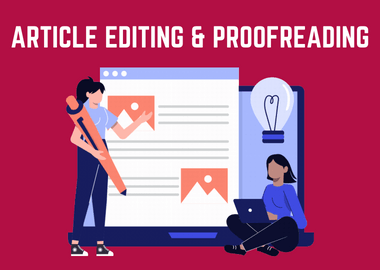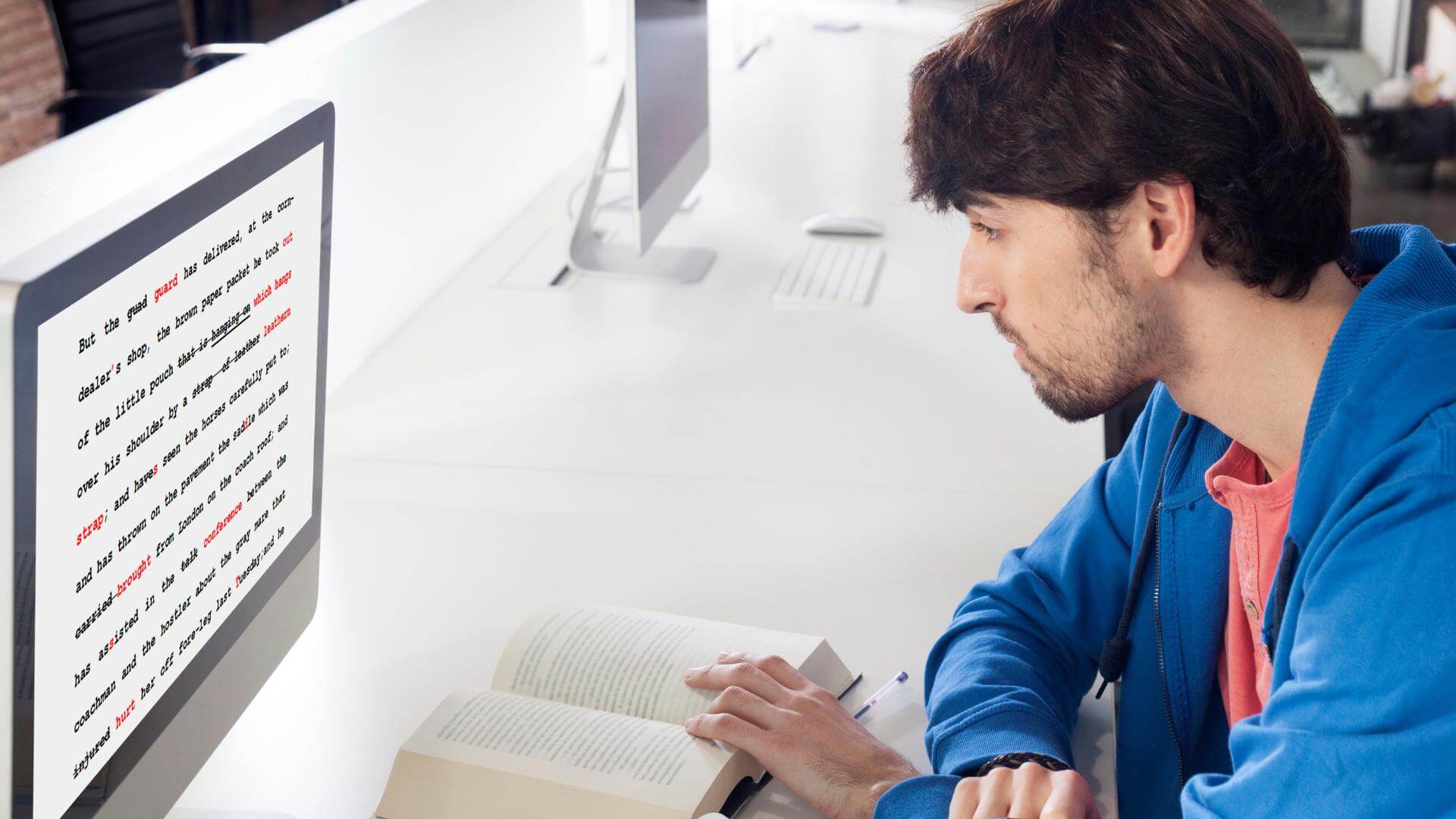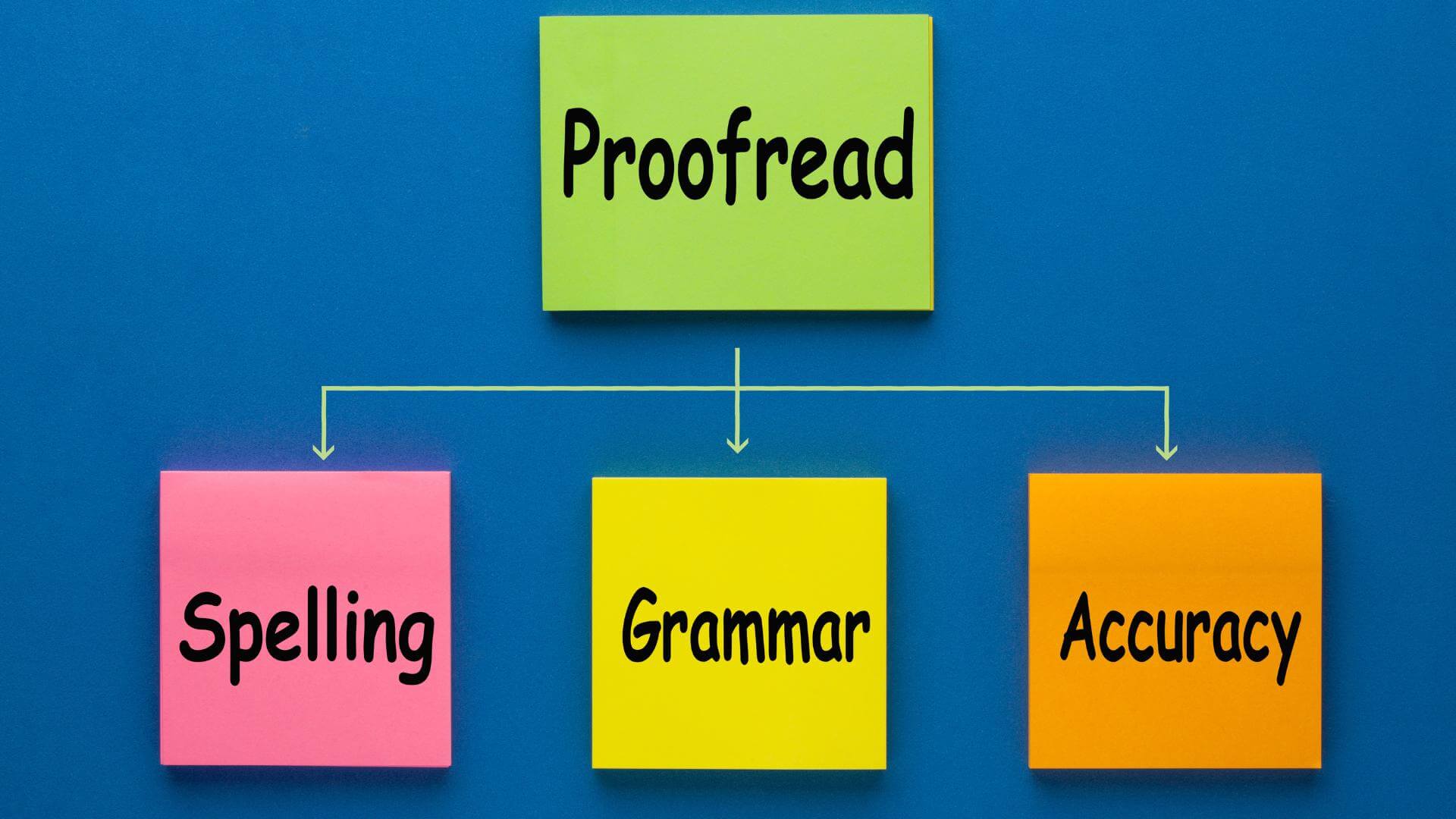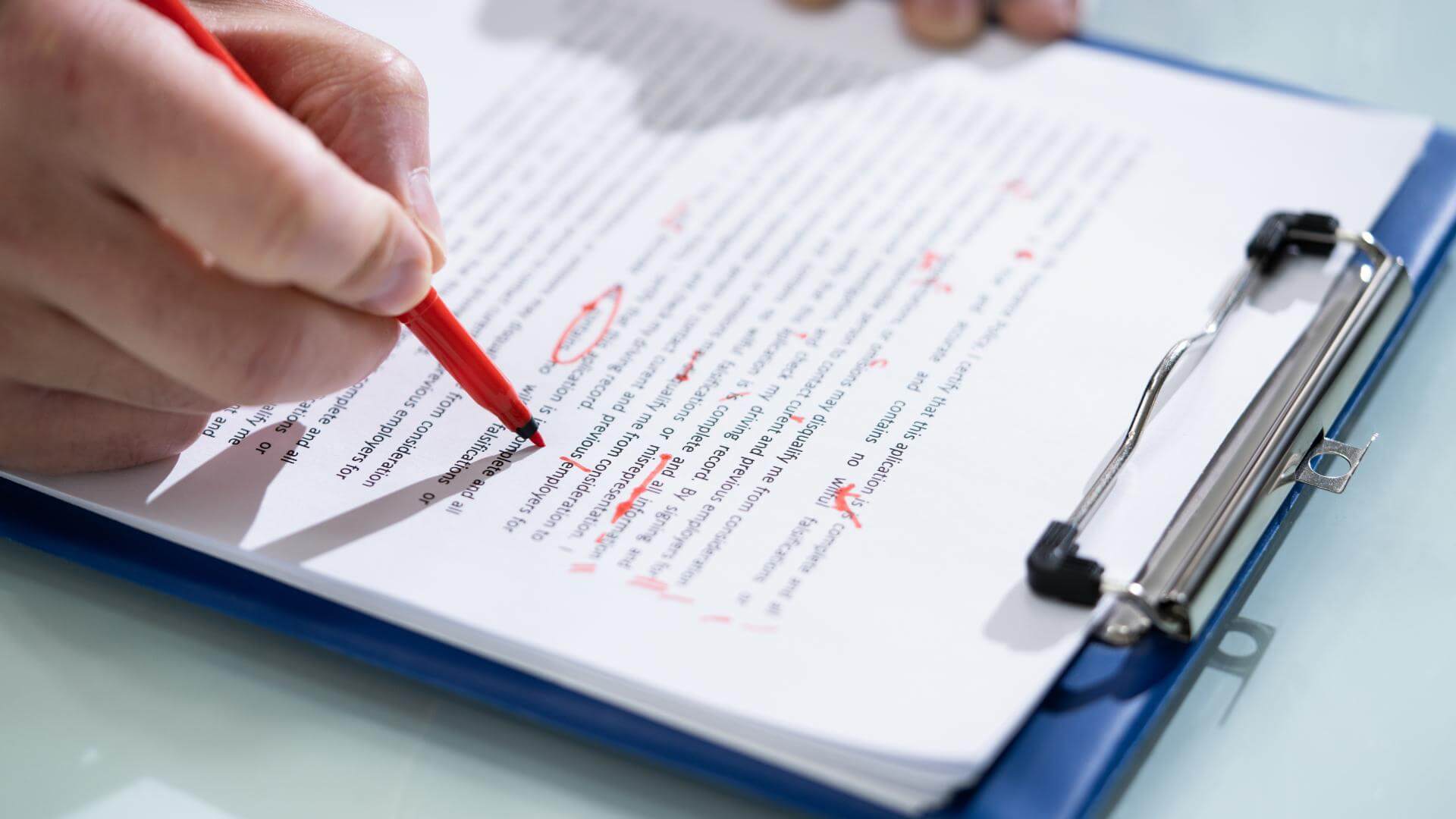
If you've ever felt the frustration of publishing articles that didn't quite hit the mark with your audience despite your excellent article writing skills, you're not alone.
We get it – your time is valuable, and you expect every article to bring in maximum engagement.
How can you achieve this feat on a consistent basis?
The answer lies in the art of editing and proofreading your articles.
With comprehensive content editing and proofreading, you can create articles that resonate with your target audience and convey your message clearly.
So, keep reading if you’re ready to level up your article writing skills with the help of thorough editing and proofreading!
Table of Contents
- The Importance of Editing & Proofreading in Article Writing
- How to Edit Your Content for Article Writing Perfection
- How to Proofread Your Content for Article Writing Perfection
- Do You Need Help From Editing & Proofreading Professionals?
- CDP - Professional Editing & Proofreading Services
- Connect With CDP Today!
The Importance of Editing & Proofreading in Article Writing
Effective article writing demands clarity of thought, seamless flow of words, and value-driven content. You can achieve them all through editing and proofreading.
Let’s explore why you must edit and proofread your articles before publishing them:
- Professional Impression: Having thoroughly-edited and error-free content is crucial for projecting professionalism in both personal and business online interactions.
- Clarity & Understanding: Well-structured, clear writing ensures your message is easily communicated and understood, minimizing the risk of miscommunication.
- Authority & Credibility: Mistakes in your articles can undermine the trust and credibility you have worked so hard to achieve. Polished, well-written content helps build trust and authority with your audience.
- SEO & SERP Rankings: Search engines prefer well-written, original, error-free content. Proper professional editing can boost your SERP rankings and aid in your SEO efforts.
- Engagement: Engaging content captures your audience’s attention while avoidable typos and grammatical errors can discourage and distract readers from engaging with your articles.
Get Professional Editing Services Today
CDP’s seasoned editors and proofreaders will ensure your articles are error-free and have content that flows seamlessly!
How to Edit Your Content for Article Writing Perfection
Put on your editor’s hat and follow these steps to edit your articles:

Focus on the Purpose of Your Article
Before you start editing an article, you need to ensure you understand the purpose of your content and your target audience.
Determine how your article serves your business objectives and helps your target audience. You might not outrightly mention the purpose in your article, but it will guide your article writing process.
Ensure that your article introduction aligns with your goal. It should serve as an opportunity to address the unspoken question on every reader's mind when they start reading an article:
"Why should I care?"
By offering a glimpse of the key information upfront, you instill confidence in the reader that they'll find more valuable content by continuing to read.
The content should alleviate their pain points, offering a worthwhile payoff for the reader's invested time.
Read the Article Thoroughly — As a Reader & an Editor
Once you have a purpose in mind, go through the content as a reader would — hands off the keyboard, except for scrolling. If you're reviewing it in print, refrain from picking up the pen during this phase.
The initial reading will help you assess whether the writing flows or not and pinpoint areas of improvement. However, our primary aim is to determine if the article helps convey its point.
Review the article once more, this time taking on the role of an editor:
- Make note of areas where the content falls short and the reasons behind it.
- Thoroughly edit the text to remove grammatical and punctuation errors.
- Assess whether the opening effectively captures the reader's attention.
- Check if the article maintains a singular theme consistently.
- Verify if every sentence and paragraph are clear and comprehensible.
- Evaluate the logical flow of the content.
- Lastly, confirm whether the content aligns with your brand's voice and style.
Make Your Article Stand Out
You must remember that other businesses in your industry will have similar objectives for their articles. It should motivate you to make your content stand out with more valuable insights.
Find inventive ways to highlight why your articles are the go-to resource for prospective clients. The key is to craft a thoughtful perspective that resonates with your target audience in a distinct and memorable way.
Offer valuable information to them that will encourage them to come back to your website, enabling you to build your readership.
Rest Your Eyes & Take Breaks
You might be familiar with the 24-hour rule in writing: After completing a draft, wait 24 hours before editing to review it with fresh eyes and catch more mistakes.
This rule isn't just for error-spotting; it can be applied to your content editing process as well.
Taking breaks to engage in enjoyable, non-writing-related activities provides the mental space needed to form new connections that bring depth and nuance to rough ideas.
It might seem counterintuitive, but many significant messages for your audience become clearer when you're not fixated on the task of crafting an important message.
So, leave enough time to edit the article while taking breaks. It will help you mature your ideas.
Just like you cannot expect to produce brilliant writing in a single burst, don't count on a sole editing session to work wonders. Take your pauses and revisit the article for better content editing.
Cut Out the Fluff
Context matters. Its significance becomes apparent when distinguishing between text that adds value and that which doesn't.
The key lies in recognizing when information goes beyond the intended scope of an article. Some of the information you add during the article writing process might not be relevant to the topic at hand.
In that case, a reader will consider it as fluffy. You need to remove that text for better flow. That said, the same information might be a perfect fit for another article or content series.
So, save those sections for further reading as they might yield excellent ideas for future articles.

Simplify Your Writing
Unless your article writing process and industry demands complicated language, try to keep your content as simple as possible. Remove excessive or overcomplicated text that lacks value.
While it’s inevitable that your writing will not be everyone’s cup of tea, you must ensure your target audience understands and appreciates what you’re writing.
Don’t miff level-headed, engage prospects by unnecessary experimentation or trying to be more creative. It can lead you to use overly complicated words that will deter your readers.
If your tone or words distract your ideal readers from the core topic of your message, your content will prove to be ineffective. So, put on your content editing hat and toss out or revise the complicated sections of your article.
Review the Visual Elements
When editing the article, your focus shouldn’t just be on the words on your screen. You must pay equal attention to the visuals you have used.
So, if your article includes charts, images, tables, or other visual elements, ensure they are labeled correctly and align with the surrounding words.
Double-check the captions to make sure they precisely describe the visuals.
Replace Repeated Words
The last thing you want to do during the article writing process is to use the same word multiple times. It creates redundancy and breaks the flow of writing.
To avoid this, make sure you replace all overused words with more choice words. Firstly, identify words that occur multiple times in your article and replace them with their synonyms.
For instance, if you end up using “great” twice, replace the second one with “excellent.”
Avoid using words that convey vague messages. Instead use more specific words that evoke clarity and creativity to aid reader understanding.
You must also ensure you have used the correct words during the article writing process. For instance, writers often confuse complement and compliment and use them interchangeably.
It’s your job to thoroughly edit the article to catch such errors and fix them.
Use Clear, Compelling Headlines
Your article’s headlines should give the reader a clear idea of the content underneath it. It should also attract them to read the text.
Ultimately, your headline must convince a reader that investing time in your article is worthwhile. You can attain this with precise, descriptive language tailored to a specific audience.
Headlines designed to appeal to "everyone" often end up appealing to no one.
Craft a headline before delving into article writing to maintain focus on your core message. After completing the final draft, generate multiple headline options and choose the one that makes the most sense.
For the ideal headlines, you must ask yourself:
- Who stands to benefit from this content?
- How am I aiding them?
- What sets this content apart?
While the answers may not yield the exact wording, they guide the process and help you come up with compelling headlines that resonate with and attract your target audience.
Fact-Check Your Article
Maintaining accuracy is crucial in the article writing process. You must edit the text to ensure you have correctly used all factual information.
Verify the names, statistics, dates, and any other factual claims you have made in the article. If you have referenced a high-authority link or article, check its credibility.
This way, you can ensure your articles maintain your credibility as an authoritative source of information for your audience.
Edit for Consistency, Clarity, and Conciseness
Consistency is key to ensure your article is well-received by your readers. Study the text for uniform spelling, capitalization, and formatting. Ensure that a chosen term or style remains constant unless a deliberate change is warranted.
Clear and concise article writing is not only more engaging but also easier to grasp. Edit sentences that are overly long or convoluted, choosing simpler alternatives. Strive to convey information succinctly without compromising the clarity of your writing.
Curious to learn how AI is evolving the content creation world?
Read our insightful blog post: Unlocking the Power of AI in Content Creation: Trends and Insights
How to Proofread Your Content for Article Writing Perfection
Here are some necessary steps you must take to proofread your article:

Review the Content for Flow
While the editing process should handle any issues in this department, you must proofread the article to double-check its flow. If any flaws surface at this stage, be sure to address and rectify them before publishing the article.
Last Check for Grammar, Spellings & Punctuation
Accurate punctuation and grammar act as the backbone of clear communication. Proofread for grammatical errors, maintain consistency in tenses, and ensure proper comma usage.
Verify the sentences are structured correctly and the punctuation marks are placed appropriately.
You must also look for typos, misspelled words, and formatting glitches. Read the text aloud to catch mistakes you might have overlooked during the article writing and content editing processes.
Maintain Your Brand’s Tone & Style of Writing
Proofread the text to ensure the tone and style of writing matches with your brand’s voice. Whether it’s formal, casual, professional, or any other style of writing, you must maintain a consistent tone.
This way, your articles will help you build your distinct brand voice and enrich the reader experience.
Review the Article Formatting and Layout
Give careful consideration to formatting elements like headings, subheadings, listicles, bullet points, and more. Confirm their consistent use and ensure they follow a logical hierarchy.
Double-check for proper spacing between words and paragraphs, indentation, and font usage as well before publishing the article.

Evaluate the Article in Its Published Form
Lastly, you must assess the content after it's published. Review the article to ensure everything is in order and it’s appearing on the site as it’s supposed to appear.
Make sure you check the mobile-version of your article as well. Check that headings, subheadings, and overall content to ensure consistency in font usage and size.
Assess the spacing between visual and textual elements and ensure there are no awkward line breaks. Additionally, check all links to see if they work properly.
Do You Need Help From Editing & Proofreading Professionals?
While you can follow the tips mentioned above after completing your articles, it’s always better to seek professional editing and proofreading services.
Seasoned editors and proofreaders can go through massive volumes of text without slowing down your scheduling. They have the experience and knowledge to check each article thoroughly and adjust the writing to help you achieve your goals.
With professional editing and proofreading, you won’t have to worry about using your time and resources on these tasks and you will get the final product sooner than later.
CDP - Professional Editing & Proofreading Services
CDP offers the following services to its client:
With our experts, you can ensure your articles are edited, proofread, and formatted thoroughly and you can publish them quickly. We also offer plagiarism checks and track all the changes we make so you can review them.
With our services, you can rest assured your articles will be error-free and offer valuable, factually-correct information to your clients in your brand voice.
